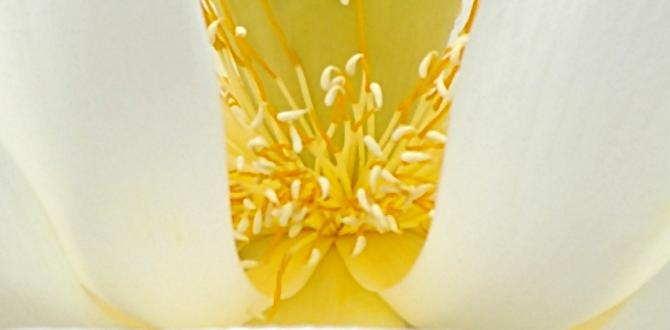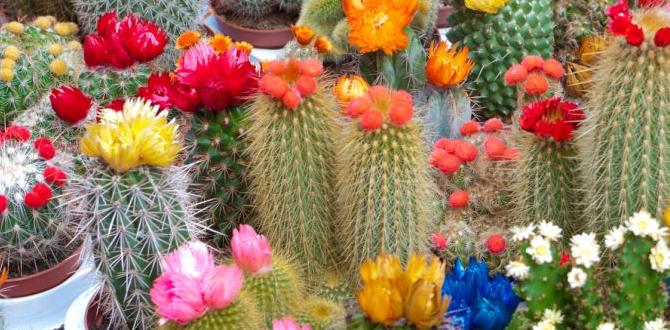Have you ever walked by a garden filled with bright geraniums? Their vibrant colors can make anyone smile. These flowers are perfect for adding cheer to your outdoor space. But how do you care for geraniums outdoors? It’s not as hard as you might think!
Many people believe that gardening is only for experts. However, even beginners can grow beautiful geraniums with some simple tips. Did you know that geraniums can thrive in the sun? They love warm weather and bright spaces. Just imagine a sunny day where you can admire your blooming garden.
Caring for geraniums outdoors is all about the right balance. They need water, sunlight, and good soil. If you give them that, they will reward you with stunning flowers. So, are you ready to learn how to make your geraniums the best they can be? Let’s dive into the world of outdoor geranium care!
Care For Geraniums Outdoors: Tips For Thriving Plants

Care for Geraniums Outdoors
Caring for geraniums outdoors can be fun and rewarding. These colorful plants love sunlight and need at least six hours of it each day. Water them regularly, but don’t let them sit in soggy soil. Did you know geraniums can attract butterflies? A little fertilizer can help them bloom beautifully. Watch for pests, as they can be pesky. With the right care, your garden can burst with vibrant colors all season long!Understanding Geraniums
Different types of geraniums and their characteristics. Ideal climate conditions for outdoor growth.Geraniums are charming flowers with many types. Here are a few common types and their traits:
- Zonal Geraniums: Known for their colorful blooms and round leaves.
- Trailing Geraniums: Great for hanging baskets due to their cascading growth.
- Scented Geraniums: They smell wonderful and have unique leaf shapes.
These plants thrive in warm weather. They like full sunlight and well-drained soil. Geraniums enjoy temperatures between 60°F and 75°F. They need protection from frost. With the right care, they can beautify any outdoor space.
What climate do geraniums need?
Geraniums need a warm climate with plenty of sunlight. Ideally, they grow best between 60°F and 75°F, helping them thrive and bloom beautifully.
Soil Requirements
Best soil types for geraniums. Importance of drainage and pH level.Geraniums are not picky eaters, but they do love their soil just right! The best soil for these cheery plants is a mix rich in nutrients, like potting soil combined with sand or perlite. This combo keeps the soil light and fluffy. Drainage is super important, too. Geraniums hate soggy feet! A soil pH between 6.0 and 7.0 is ideal. Too acidic or too basic? No, thank you! Keep their roots happy for beautiful blooms.
| Soil Type | Drainage | pH Level |
|---|---|---|
| Potting Mix | Good | 6.0 – 7.0 |
| Garden Soil | Moderate | 6.0 – 7.0 |
| Sandy Soil | Excellent | 6.5 – 7.5 |
Sunlight and Temperature Needs
Recommended sunlight exposure. Optimal temperature ranges for healthy growth.Geraniums love soaking up the sun! Aim for at least six hours of bright light each day. They will reward you with vibrant blooms, making your garden shine. But beware of extreme temperatures! Geraniums thrive best between 65°F and 75°F. Too hot or too cold? They might throw a little plant tantrum. Keep them cozy, and they’ll be as happy as a bee in a flower patch!
| Condition | Ideal Range |
|---|---|
| Sunlight Exposure | 6+ hours/day |
| Temperature | 65°F – 75°F |
Watering Practices
How frequently to water geraniums. Signs of overwatering and underwatering.Geraniums need water but not too much. Water them once a week, or every few days in hot weather. Check the soil; it should be damp, not soggy. Signs of overwatering include yellow leaves and droopy stems. For underwatering, look for brown leaves and dry soil. Healthy geraniums need a happy balance!
How often should I water geraniums?
Water your geraniums once a week or more in very hot weather. Always check the soil first!
Signs of overwatering:
- Yellow leaves
- Droopy stems
- Soggy soil
Signs of underwatering:
- Brown, crispy leaves
- Dry soil
- Wilting plants
Nutrient Requirements
Essential fertilizers and feeding schedules. Organic vs. synthetic fertilizers for geraniums.Geraniums need special food to grow strong and colorful. Think of fertilizers as their favorite snacks. Essential nutrients come from two types: organic and synthetic. Organic fertilizers are like home-cooked meals, while synthetic options are fast food. Both can work, but the secret is the right schedule. Geraniums usually prefer a boost every 4 to 6 weeks. Below is a simple feeding guide:
| Type of Fertilizer | Application Frequency |
|---|---|
| Organic Fertilizer | Every 6 weeks |
| Synthetic Fertilizer | Every 4 weeks |
So, remember: happy geraniums equal happy gardeners! No one wants grumpy plants.
Pest and Disease Management
Common pests that affect geraniums outdoors. Preventative measures and treatments for diseases.Geraniums can face pests and diseases when grown outdoors. Common pests include aphids and spider mites. These tiny bugs suck plant juices, causing damage. Keep an eye out for yellowing leaves or stunted growth. To manage pests, regularly inspect your plants and consider natural insecticides.
Diseases like powdery mildew may appear in humid weather. To prevent this, ensure good air circulation and avoid overwatering. If your plants get sick, you can remove affected parts and use fungicides.
- Inspect plants regularly for any signs of trouble.
- Use proper spacing to promote airflow.
- Water early in the day to keep leaves dry.
- Eliminate dead debris around the plants.
What are common pests of geraniums?
Common pests include aphids, spider mites, and whiteflies. They can harm your geraniums by sucking out sap which weakens the plants.
How do I treat diseases on my geraniums?
Remove affected leaves and use fungicides. Good care includes proper watering and airflow to prevent issues.
Pruning and Maintenance
Best practices for pruning geraniums. Tips for maintaining overall plant health.Pruning geraniums is like giving them a fresh haircut. It helps them grow strong and stay healthy. For best results, trim off dead leaves and flowers regularly. This keeps the plant looking tidy and encourages new blooms. It’s also a good idea to cut back stems to promote bushy growth. Try to prune around every few weeks. But remember, don’t go overboard! A little snip here and there goes a long way!
| Tip | Details |
|---|---|
| Regular Trimming | Tidy up dead parts every few weeks. |
| Timing | Prune in the morning or late afternoon. |
| Right Tools | Use clean, sharp scissors or pruners. |
| Watering | Keep plants hydrated but not soggy! |
To keep your geraniums in tip-top shape, remember to water them well. Too little or too much can make them grumpy. Feed them some fertilizer every month, and they’ll be dancing with joy! Healthy geraniums can grow up to 36 inches tall. As the saying goes, “A happy geranium is a blooming geranium!”
Seasonal Care Tips
What to do in spring, summer, fall, and winter. Preparing geraniums for seasonal changes.Caring for geraniums changes with the seasons. Here are some tips to help them thrive all year round:
- Spring: Plant geraniums once the frost is gone. Make sure they have sunshine and water regularly.
- Summer: Keep the soil moist. Geraniums love warm weather and do well with some extra sunlight.
- Fall: Trim the leaves and prepare for cooler temperatures. This helps the plant stay healthy.
- Winter: If outdoors, bring them inside if it’s too cold. Limit watering to keep them safe.
These steps will ensure your geraniums are ready for seasonal changes and continue to bloom beautifully!
What should I do for my geraniums in winter?
In winter, bring geraniums indoors if it’s cold outside. Keep the plants in a bright spot but away from drafts. Water them less, as they need a break from growing.
Propagation Techniques
Methods for propagating geraniums outdoors. Benefits of propagation for garden sustainability.There are fun ways to create more geraniums for your garden. One method is taking cuttings from healthy plants. You can also divide existing plants. Both methods help your garden stay strong and lively. Propagation allows for sharing plants with friends, making gardening more enjoyable.
- Taking Cuttings: Cut a piece of stem and place it in water or soil until roots form.
- Dividing Plants: Dig up an established geranium and split it into smaller sections.
Using these techniques contributes to garden sustainability. You can grow new plants without buying them. This saves money and supports local biodiversity. Healthy gardens help the planet too!
How do you propagate geraniums?
You can propagate geraniums by taking cuttings or dividing plants. Both methods are easy and effective for growing new plants.
Common Mistakes to Avoid
Top pitfalls in geranium care. How to troubleshoot common care issues.Taking care of geraniums can be fun, but there are some silly mistakes to avoid. One big blunder is overwatering them. If your petals droop, it could be a sign of soggy soil. Use a pot with holes to let excess water escape. Another mistake is not giving them enough sunlight. Geraniums love to soak up those rays! Aim for at least six hours of sunlight daily. Check the leaves too! If they turn yellow, your plant might be hungry for some nutrients. Oh, the drama of a picky plant!
| Common Mistake | Solution |
|---|---|
| Too much water | Use pots with drainage holes! |
| Not enough sunlight | Move them to a sunny spot! |
| Yellow leaves | Feed them some fertilizer! |
Keep an eye on your geraniums, and you’ll be a plant parent extraordinaire! Remember, they need love but not overbearing attention.
Conclusion
In summary, caring for geraniums outdoors is fun and rewarding. You should choose a sunny spot, water them regularly, and keep the soil well-drained. Watch for pests and deadhead flowers to keep them blooming. With these tips, you’ll enjoy beautiful, healthy geraniums. So, grab your gardening tools and get started! For more advice, check out gardening books or websites.FAQs
What Are The Ideal Sunlight And Temperature Conditions For Growing Geraniums Outdoors?Geraniums love bright sunlight! They need at least six hours of sunlight each day. The best temperature for them is between 65°F and 75°F (18°C to 24°C). If it gets too hot or too cold, they might not grow well. So, find a sunny spot that stays warm!
How Often Should Geraniums Be Watered When Planted In Outdoor Gardens?You should water geraniums every 2 to 3 days when they are newly planted. After they grow a bit, you can water them once a week. Always check the soil first. If it feels dry an inch down, it’s time to water!
What Type Of Soil Is Best For Outdoor Geraniums, And How Can I Ensure Proper Drainage?The best soil for outdoor geraniums is light and well-draining. You can use potting mix that has some sand or perlite. To make sure water drains properly, plant your geraniums in pots with holes at the bottom. You can also add small rocks or pieces of broken pot at the bottom for extra drainage. This helps keep the roots from getting too wet!
How Can I Prevent Pests And Diseases That Commonly Affect Outdoor Geraniums?To keep pests and diseases away from your outdoor geraniums, you should start by planting them in sunny spots. Water them in the morning so the leaves dry quickly. Check your plants often for bugs or yellow leaves, and remove any that look sick. We can also use gentle sprays if we see pests. Finally, make sure the soil drains well to keep roots healthy!
When Is The Best Time To Fertilize Outdoor Geraniums, And What Type Of Fertilizer Should I Use?The best time to fertilize outdoor geraniums is in spring. This helps them grow strong and healthy. Use a balanced fertilizer, which means it has equal amounts of nutrients. Look for a fertilizer labeled 10-10-10. We should fertilize them every few weeks during the growing season.







